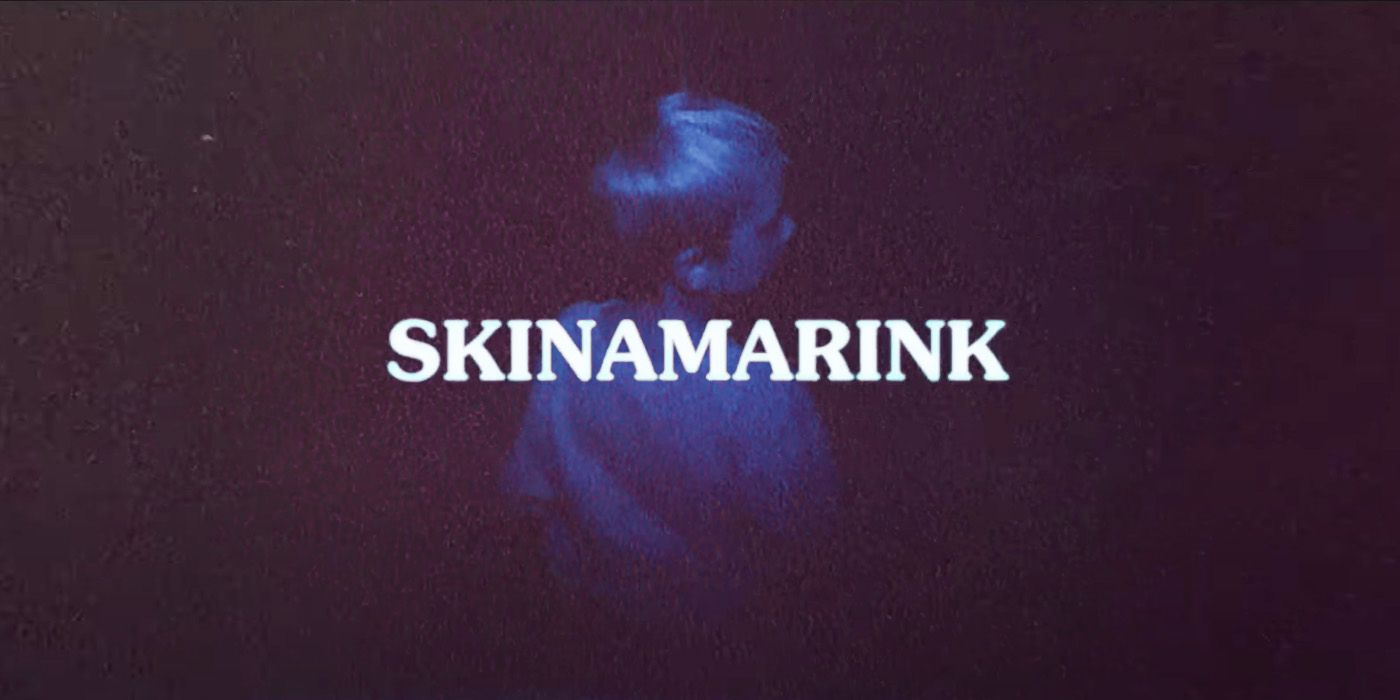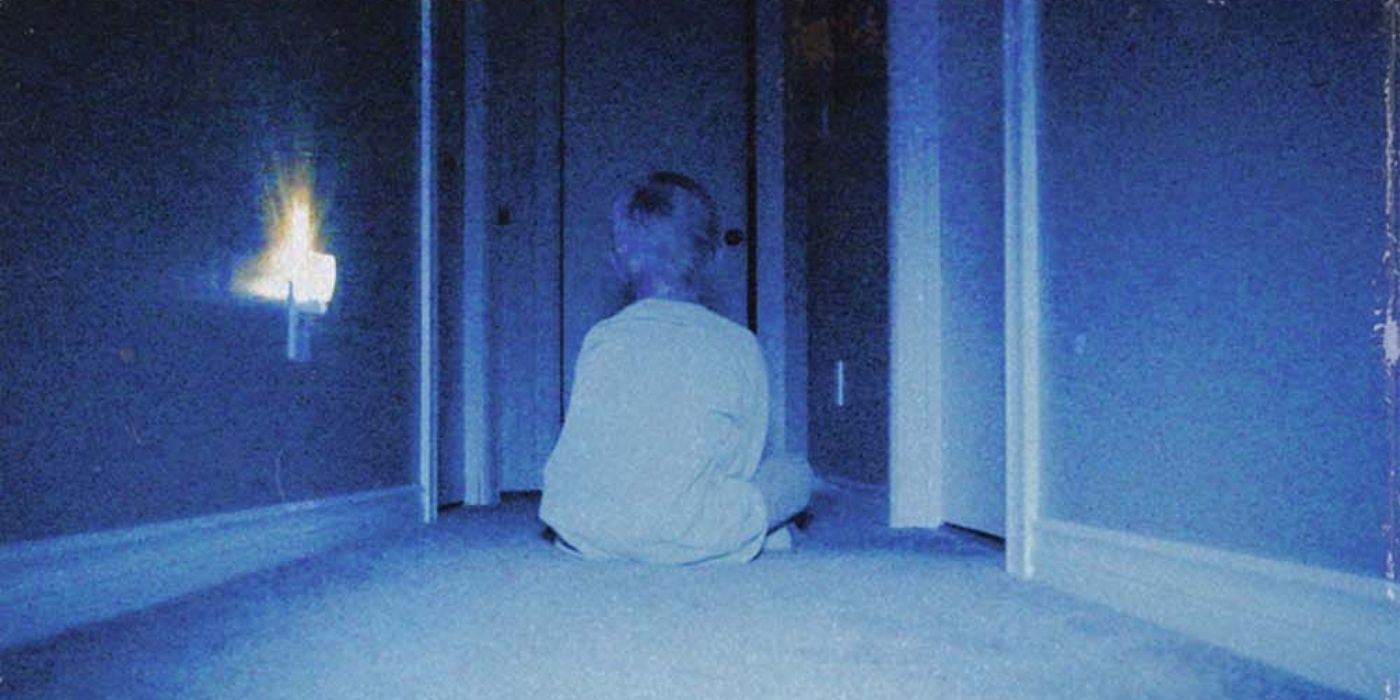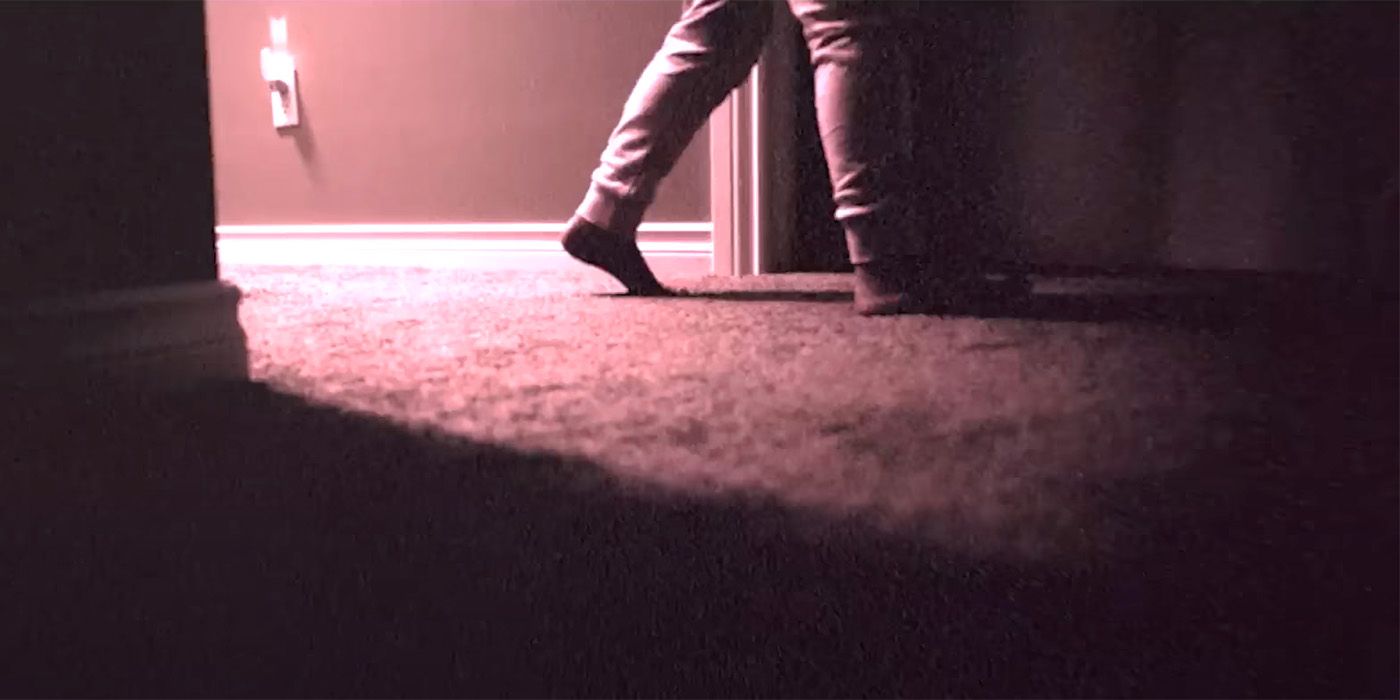Editor's Note: The following article contains spoilers for Skinamarink. Continue at your own risk.
Kyle Edward Ball’s microbudget horror, Skinamarink, has translated its Tiktok virality to box-office success, having already made 60 times its budget in theaters since its release last weekend. Made on a shoestring budget of only $15,000 and filmed in the director’s childhood home, the film will be released on Shudder on February 2 after its incredibly successful theatrical run. Despite Ball’s minimalist approach, he conjures up major scares by evoking familiar, eerily nostalgic feelings of childhood terror. Set in 1995, the film follows two young children, Kevin (Lucas Paul) and Kaylee (Dali Rose Tetreault), who wake up in the middle of the night to find that something strange is going on in their home.
The young siblings do what any child waking up in the middle of the night from a bad dream might do, run to their parent’s bedroom, only to find that their dad is nowhere to be found and the doors and windows are missing. They take refuge in the downstairs living room, bringing blankets and pillows and putting old cartoons on the TV to make the eerie quiet and the darkness seem less frightening. The blue light of the television is the only major source of light onscreen, casting a haunting glow over the home. As the children take refuge in the downstairs living room, a mysterious voice tries to lure them to come upstairs. Ball conjures the visceral fear many of us can recall of being a child, waking up in the middle of the night from a bad dream when the dark of night suddenly transforms your home into someplace ominous and terrifying.
The Movie Is Dark, Literally and Figuratively
With minimal sources of light, primarily coming from a flashlight or the television screen, many shots are in complete pitch darkness. Ball creates a disorienting atmosphere that implores you to study every frame carefully for the presence of something evil. By showing us very little, the smallest sounds or sudden movements cause terror. As a child, the true monster is often the darkness itself and the possibilities of what could lie in the shadows, a feeling Ball recreates throughout the film. He cuts to various, mundane aspects of the home like a dark hallway, letting the camera linger on a ceiling light fixture, a nightlight, or Legos on the floor for long periods. In less masterful hands, these shots might appear pointless, but Ball uses them to craft an atmosphere in which the smallest details around the home feel like an ominous forewarning that something is not right. His lingering shots of simple household objects ask the viewer to lean in closely and pay attention, something that pays off tenfold when we must confront the source of terror at the end.
Yet, the Soundtrack Is Filled With White Noise
Amidst the darkness, Ball employs sound design in a way that captures the chilling white noise of a home in the middle of the night. The grainy cinematography and minimal sound effectively reduce us to a child wandering through our home at night, hoping we won't find any monsters or intruders lurking in the darkness. Along with the white noise, we also hear the cartoons in the background, creating a simple but chilling symphony of terror specific to childhood. It makes the moments when we do hear a sudden sound, such as the blaring of a cartoon theme tune or loud creak, all the more jarring. The white noise and dark, grainy cinematography leave you, the viewer, purposefully in the dark as well, searching for an answer alongside the children. The film’s horror does not often come from what you’re looking at on screen, but rather the feeling of thinking you could see something terrible in the shadows at any moment. One of the film’s best examples of this is when Kaylee is asked by the evil presence to come upstairs to her parent’s bedroom and look under the bed. The sequence is mostly dark, and there’s nothing found under the bed, but the terrifying suspense it creates aptly mimics the feeling of being scared to peek underneath your bed as a child for what monster you might uncover. Ball’s use of mysterious darkness is pivotal, exemplifying how any environment can feel terrifying if you’re unable to see your surroundings.
Ball strips the children's comforts away one by one, turning everything from a teddy bear to a Barbie doll into sources of terror. A nightlight mysteriously falls out of the outlet, and one shot lingers on the wall outlet, its ghost-like form a reminder that these simplicities can become frightening if you stare long enough. Slowly, more and more of the mundane aspects of the home start to transform. Legos spill across the floor by themselves and the television cartoons begin to glitch, now menacing rather than comforting. In one memorably harrowing shot, the children’s Fisher-Price phone toy’s face suddenly moves. Their sources of comfort in the darkness are stripped away from them, gradually taken over by this faceless, malevolent force in the home.
You Rarely See the Children
The faces of the protagonists, Kaylee and Kevin, are also rarely shown. We hear their hushed whispers and naive ways of coping with their fear, a constant reminder that they are incredibly ill-equipped to deal with such danger alone. Rather than decide to call 911 or scream for help, they instead get juice boxes from the fridge, which we later see strewn across the floor by the mysterious entity. In the instances that the children are shown, it’s primarily from the knees down. We hear their hushed whispers as they tip-toe throughout the home trying to find their parents, but they are faceless in the eyes of the viewer, a device that dares us to imagine ourselves as the children navigating this nightmare. It makes the few moments Ball reveals the evil, such as the brief shot of Kaylee’s face without eyes and a mouth after the monster has taken them away, all the more startling and terrifying.
One of the final pieces of dialogue serves to perfectly capture how Ball’s film transports us back in time. Kevin asks, “Can we watch something happy?” as if putting a different cartoon on the TV could keep the nightmare at bay for a little longer. There is nowhere for them to run now; every source of safety and distraction has been stripped away, leaving them trapped in a waking nightmare. In his impressive feature debut, Ball brings our childhood fears to life, crafting a waking nightmare in which there’s nowhere to turn. Ultimately, Skinamarink reduces you, the viewer, back to the feeling of being a child, awoken in the middle of the night and full of fear. Ball makes the most of minimal resources, luring the viewer into a familiar, haunting feeling of fearing what monster could be lurking in the darkness.



